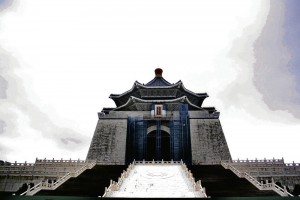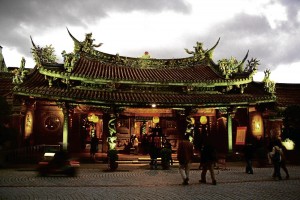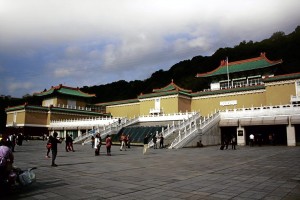AirAsia opens doors to Taipei
TAIPEI—AirAsia is opening more doors for overseas Filipino workers as well as tourists this holiday season by offering low cost flights to Singapore and Taiwan from Clark, Pampanga.
According to Maan Hontiveros, AirAsia CEO in the Philippines, the move is not only envisioned to provide low fare air travel to OFWs but also drive tourist traffic to the Philippines.
A joint venture between Filipino investors Hontiveros, Antonio Cojuangco and Michael Romero, and Malaysia’s AirAsia International Ltd., AirAsia in the Philippines now provides four weekly flights to Taipei and daily flights to Singapore. The airline is flying brand new Airbus A320s.
Latest data culled from the Philippine Embassy pegged the number of Filipinos working in Singapore at 177,600, while some 100,000 work in Taiwan.
“Taipei is a very important route for us right now. We are the only airline flying this route right now,” says Hontiveros.
She points out that many OFWs in Taiwan come from Northern and Central Luzon, making Clark an ideal hub for their flights.
Hontiveros says that they are committed to serving the underserved, which is why the airline is based in Clark.
She explains that, by flying out of Clark International Airport, the airline encounters fewer delays compared with the Ninoy Aquino International Airport.
“Naia has a lot of air traffic and delays whereas Clark offers unparalleled service,” she says.
Ambassador Raymond Wong of the Taipei Economic and Cultural Office (Teco) in Manila says that an affordable air fare will lure more tourists to the Philippines.
More than that, he says, the new route will encourage Filipino tourists to visit Taiwan.
Wong says Teco has made it easier for visitors to apply for visas to Taiwan.
“Just come to our office, fill out the forms and get your visa the next day,” he says.
So what can tourists expect from Taiwan?
Upon stepping off the busy Taoyuan International Airport, most first time visitors to Taipei will immediately notice how modern the city is.
Although the place is filled with buildings, freeways and ongoing construction of bridges and other structures, there is hardly any traffic snarl coming from the airport.
Also, despite being very modern, Taipei teems with greenery as carefully trimmed bushes and ornamental plants fill every nook and cranny of the city.
Nestled among the modern structures are snippets of Taiwan’s colorful past, with its many museums, temples and relics. Most tourists pause to admire the gates that used to serve as entry points to the once walled city.
This mixture of the old and new is probably what draws many tourists to Taipei. And the best part of it is that everything seems to be within reach via the city’s clean mass rapid transit (MRT) system as well as its efficient bus lines and taxis.
Steeped in history
Taiwan has many museums, and any visitor may first want to visit the National Palace Museum for a good briefing on the country’s history and culture.
Located on Zhishan Road, the museum has a constant stream of visitors queuing to see the 690,000 Chinese artifacts and artwork originally from the Forbidden City in Beijing. Some 600,000 of these priceless art were shipped from mainland China to Taiwan when tension rose between the nationalists and communists back in 1949.
Of particular interest are the museum’s exhibits on ceramics and jade carvings, particularly the jadeite cabbage from the Qing dynasty which is one of the most popular items on display.
For tourists who speak little or no Mandarin, the museum offers free daily guided tours in English at 10 a.m. and 3 p.m.
The museum also offers visitors a taste of palace food through its Sanxitang Teahouse, which sits at the very top of the museum.
The teahouse was patterned after Emperor Qianlong’s study in the Forbidden City, making the dining experience even more special.
If imperial food is not your cup of tea, there is also the Silks Palace Restaurant a few steps away from the museum, which serves good Chinese fare.
At nearby Zhongshan District lies the Taipei Martyrs’ Shrine, built in honor of all those who died in wars fought by the Republic of China (ROC).
Then there is the memorial hall built for Chiang Kai-Shek where the changing of the guard, similar to the Martyrs’ Shrine, happens to be a big tourist draw.
With an octagonal roof of blue glazed tiles, the white memorial hall houses a museum that tells the life story of the country’s Generalissimo.
The memorial hall is surrounded by a park filled with flower beds, echoing the colors of the ROC flag. Nearby is the National Theater and the National Concert Hall.
Charming attractions
Tourists can get much of the old world Taipei in one place: the Dalongdong area. The spot has been selected by Taiwan’s tourism bureau as one of its more “charming attractions.”
It is filled with temples, museums and even has its own night market.
In Dalongdong is the Baoan Temple, built by immigrants from mainland China.
The temple, decorated with intricate murals and ornate dragon carvings, is consecrated to the deity Baosheng Dadi. But its doors are also open to Confucian, Buddhist and Taoist followers.
A few steps away from the Baoan Temple and just across the street is the Taipei Confucius Temple with its simple white granite pillars. The structure resembles the original Confucius Temple in mainland China.
Taiwan’s tourism bureau has also called the attention of tourists’ to a quaint tea house behind Baoan Temple called Black Tea House.
Tourism officials say that this little tea place is a big hit among locals and foreigners for its daily brews sourced from tea farmers in the countryside.
Aside from history and religion, the citizens of Taipei also love their art. It is literally everywhere—art pieces may be found on the streets, in parks and even featured on various local products being peddled at the malls and night markets.
Citizens are proud of anything made in Taiwan. Shop attendants in malls and markets tend to shout out to customers that they are selling wares “made in Taiwan!”
For the connoisseurs, the city offers the Taipei Fine Arts Museum and the Museum of Contemporary Art Taipei.
When night falls
Brave enough for the crowded night markets? No Taipei tour is complete without shopping and food trips at the city’s many night markets.
Famous for being a bargain-hunter’s haven, Taipei’s night markets also boast of really good street food.
Be sure to drop by Shilin Night Market on an empty stomach for some challenging dining experience.
At the basement of the market is a food court which is constantly crowded. When night falls, the market increasingly teems with activity. The flurry of excited cooks frying oyster omelet, crabs and shrimps, dipping solidified milk on sticks in batter, swirling beef noodles into bowls and preparing the infamous stinky tofu tend to assault one’s senses upon entering the area.
If you’re not adventurous enough for stinky tofu, you may choose from a myriad of street food items. There is Hot Star’s gigantic chicken cutlets which are so tasty people line up even during cold nights for a bite. There is also the usual beef noodles and the curious fried milk on sticks for dessert, which taste like mini cream puffs covered in batter and deep-fried to perfection.
Back upstairs are stalls after stalls selling what have got to be the most succulent fruits, something Taiwan is also known for producing.
There are also a lot of kiosks selling souvenirs, boxes of the popular pasalubong pineapple cakes, and affordable clothing and shoes.
And they mean business when they say that bargains can be found at night markets.
Go ahead and haggle because here a pair of flats can go for as low as NT$190, or roughly just around P300. They also have a lot of nifty looking shirts, trousers, and winter clothing being sold for unbelievable rock-bottom prices.
Ear-popping ride
Taipei 101, one of the world’s tallest buildings, is probably one of the touristy stops everyone will no doubt make time for.
So grab your tickets to the country’s highest structure and ride the world’s fastest elevator which ascends at a speed of 1010 meters a minute. You get the ear-popping sensation similar to what you feel on an airplane. But the ride up is well worth your while once you get to see the spectacular view of Taipei from the top.
And the fun does not stop there. Sitting at Taipei 101’s basement, another treat awaits those who are patient enough.
Din Tai Fung. Uttering this phrase may be enough for Chinese food connoisseurs to turn on their seats. But for those who are puzzled, Din Tai Fung is the place to go for the best xiaolongbao or steamed dumplings.
Din Tai Fung has been included in The New York Times’ Top 10 restaurants and has also won the prestigious Michelin award. Testament to just how good the food served at Din Tai Fung are the daily long queues—what people will go through just to get a table.
The dining experience starts with appetizers like pickled cucumbers with a bit of spiciness to them. Then there are the sautéed greens and more spicy dishes. Later, the waiter walks in carrying bamboo containers filled with steaming, delicious xiaolongbao.
The waiter even taught us how to eat the dumplings, instructing us to lift them by the tips from the bamboo containers so as not to rip the delicate dough. All this fuss in handling the dumplings is worth it once you take a bite while the hot soup coats your mouth, releasing exquisite flavors.
Even the dessert came in the form of steamed dumplings filled with red bean paste—and they were simply exquisite.
I will never look at Chinese food the same way again and hope someone brings the phenomenal Din Tai Fung to the Philippines.
I am sure there is more to Taipei than what we covered in our four-day trip, judging from all the unfamiliar places featured in some twenty or more travel brochures. But I will definitely go back.
I will be back for another round at Din Tai Fung, possibly a relaxing dip at Beitou Hot Spring, a trip to less commercial night markets, maybe. But if I can muster enough courage, I may even check out that weird restaurant over at Xining S. Road which serves food using toilets and other bathroom equipment.
For me, Taipei is just the beginning. The rest of Taiwan still remains to be explored.




















